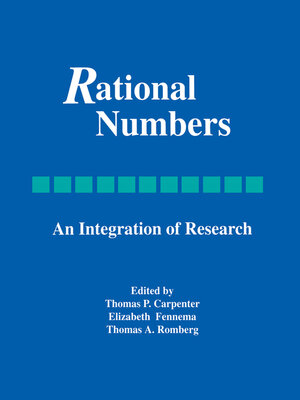Rational Numbers
ebook ∣ An Integration of Research · Studies in Mathematical Thinking and Learning
By Thomas P. Carpenter

Sign up to save your library
With an OverDrive account, you can save your favorite libraries for at-a-glance information about availability. Find out more about OverDrive accounts.
Find this title in Libby, the library reading app by OverDrive.



Search for a digital library with this title
Title found at these libraries:
| Library Name | Distance |
|---|---|
| Loading... |
Until recently there had been relatively little integration of programs of research on teaching, learning, curriculum, and assessment. However, in the last few years it has become increasingly apparent that a more unified program of research is needed to acquire an understanding of teaching and learning in schools that will inform curriculum development and assessment. The chapters in this volume represent a first step toward an integration of research paradigms in one clearly specified mathematical domain.
Integrating a number of different research perspectives is a complex task, and ways must be found to reduce the complexity without sacrificing the integration. The research discussed in this volume is tied together because it deals with a common content strand. During the last ten years specific content domains have served as focal points for research on the development of mathematical concepts in children. The areas of addition and subtraction, algebra, rational numbers, and geometry are notable examples. Whether a similar organizational structure will prevail for programs of research that integrate the study of teaching, learning, curriculum, and assessment is an open question. The perspectives presented in this volume illustrate the potential for adopting this perspective.







